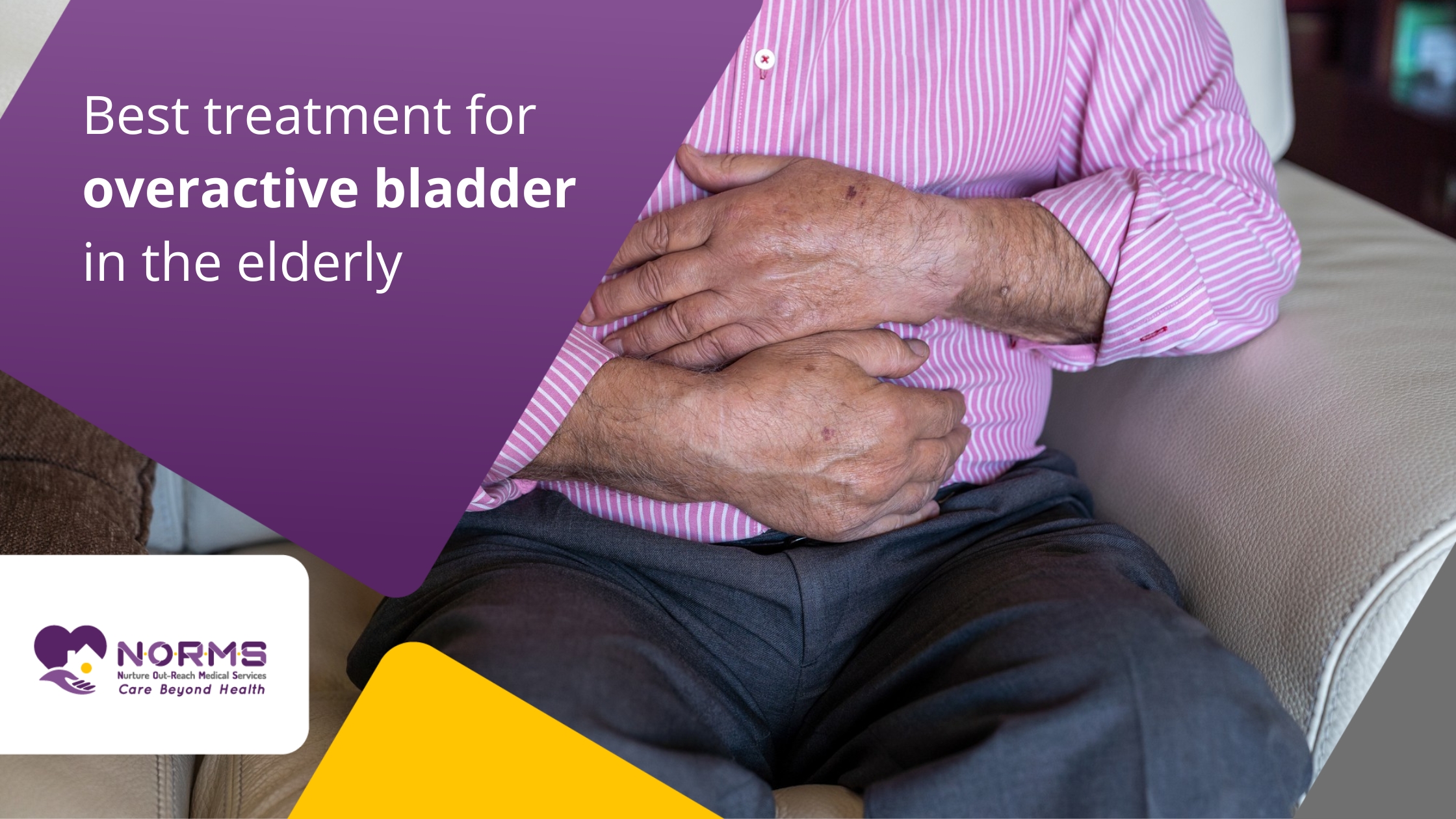
The overactive bladder, abbreviated as OAB, especially in elderly people, usually involves situations such as frequent need to urinate, urge incontinence and occasional accidental loss of urine. One of the biggest advantages is that OAB is curable, and several procedures can help minimise the problem’s effects. Patients who have OAB may find significant enhancement in their comfort, independence, and quality of life from finding the best treatment.
This blog discusses some of the issues related to the treatment of overactive bladder in the elderly: medications, lifestyle changes, other therapies, etc.
Table of Contents
The first line of treatment with OAB is conservative since there are no conclusive channel of managing the ailment. It is normally efficient and does not have any negative impacts on the patient’s health, so appropriate for elderly patients.
Bladder Training: Using a bathroom schedule that will help a person delay the time they spend in the bathroom and retrain the bladder.
Pelvic Floor Exercises (Kegels): Pelvic floor exercises, and appropriate breathing pattern makes one be in a better position to control the urge to pass stool and urine.
Fluid and Diet Management: Avoid caffeine and alcohol, which aggravate the system, spicy products, and large volumes of water before bed.
When lifestyle modifications fail, medications are then used to loosen bladder muscles and alleviate the signs of OAB. They may be used to augment control and minimise urgency of urinary incontinence.
Antimuscarinics: They are helpful in the particular of the muscles in the bladder also helps to decrease the desire to urinate.
Beta-3 Agonists: These drugs facilitate the muscles walls of the bladder to become less contractible to enable larger volumes of urine.
Elderly people are usually on one or many medications, so they consult a doctor to select the proper medication that will not have a negative impact on the existing medications. Kindly note, none of these medications should be taken without proper consultation with a doctor or a medical specialist.
Many elders are not accustomed to drugs and lifestyle changes. Botox in such patients may be given. Into the wall of the bladder, the Botox weakens the bladder muscles and controls the frequency of contractions that are related to urge incontinent.
Long-Lasting Relief: It usually take 6 to 12 months before a repeat treatment is required.
Minimally Invasive: The good thing with it is that it is an outpatient procedure and can therefore be borne easily by elderly patients.
However, possessing the said treatment should be done under a specialist accompanied with regular follow-ups with a possibility of side effects such as urinary retention.
Neuromodulation also referred to as nerve stimulation is also a more developed treatment and it is used when others do not work on symptoms of OAB. Bluetooth: A surgical process whereby mild electrical impulses are applied on nerve that controls the bladder.
Percutaneous Tibial Nerve Stimulation (PTNS): An electrode is used and it is as small as a tip of the pencil and inserted around the ankle to stimulate nerves that are connected to the bladder.
Sacral Nerve Stimulation (SNS): With this therapy an implanted device sends electric impulses to the sacral nerves in the lower back that control the bladder.
Both these treatments are largely innocuous and beneficial and shouldn’t be discounted for individuals for whom traditional medication or changes in behavior don’t prove helpful.
Sanitary items like absorbent pads, adult diapers, and reusable toileting products may not cure OAB. Still, they can be useful if this is one product a patient is comfortable using. Such products should be used in conjunction to prevent accidental leakage and to offer comfort so that the other remedies can work.
Choose the Right Product: Choose products that match your needs, the level of incontinence, and the quality and absorbency of the product.
Keep Toileting Aids Handy: The specific products include portable urinals, bedside commodes, or raised toilet seat can be helpful to the elderly with mobility problems.
OAB is a condition characterised by urinary urgency, frequency, and nocturia that elderly patients complain frequently. As you age, you are more likely to have OAB. Still, other factors such as weak pelvic muscles, neurological disorders, and other medical conditions such as diabetes can also cause OAB. Appropriate conservative measures and medications, listed individually, with or without using minimally invasive techniques, can yield considerable symptom improvement.
Effective management of OAB can help most elderly patients with this condition lead everyday lives, cut the number of accidents in half and dramatically enhance their quality of life.
Measures like cutting down caffeine products intake, avoiding fluids at night, and obeying the rules of pelvic floor exercises as Kegels help to control OAB symptoms quite effectively. Another way is bladder training that implies the gradual increase of the interval between subsequent visits to the bathroom.
Pharmacotherapy consists of drugs such as antimuscarinics and β 3 adrenergic agonists; which might be effective but could cause potential side effects in elderly patients. There are some side effects pertaining to certain medicines that include dryness of the mouth, indigestion and confusion. Despite this, one should consult his or her doctor to know the correct frequency of using the tablets depending on the patient’s past medical history and the illness at hand.
Some of the potential treatment options include Botox injections, nerve stimulation or surgery, though they’re most often recommended when other options don’t work. The medications are more or less safe for elderly clients but the treatments have to undergo a critical review to determine their suitability to any client’s condition. A decision may be made in consultation with a urologist.